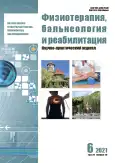Гиалуронидаза: эффективность и безопасность применения в косметологии
- Авторы: Иконникова Е.В.1,2, Голанова О.А.3, Круглова Л.С.1,2
-
Учреждения:
- Центральная государственная медицинская академия Управления делами Президента Российской Федерации
- Институт пластической хирургии и косметологии
- ООО «Делайт-Ланцетъ», клиника «Ланцетъ-Центр»
- Выпуск: Том 20, № 6 (2021)
- Страницы: 511-516
- Раздел: Обзоры
- URL: https://journals.rcsi.science/1681-3456/article/view/108027
- DOI: https://doi.org/10.17816/rjpbr108027
- ID: 108027
Цитировать
Аннотация
С увеличением запросов на коррекцию эстетических недостатков дермальными наполнителями на основе гиалуроновой кислоты участились случаи нежелательных явлений и осложнений. Гиалуроновая кислота в виде дермального наполнителя является одним из наиболее популярных в эстетической медицине инъекционных средств и обладает высоким профилем безопасности. Несмотря на то что она является неотъемлемой частью внеклеточного матрикса, филлеры на её основе также могут вызвать осложнения. Применение антидота в виде гиалуронидазы позволяет скорректировать возможные нежелательные реакции, такие как гиперкоррекция, эффект Тиндаля, формирование гранулём, а также развитие ишемии тканей. Гиалуронидаза широко используется во всех отраслях медицины, включая лечение спаечных процессов в организме, при экстракорпоральном оплодотворении, улучшает всасывание лекарственных препаратов в очаге поражения при лечении онкобольных, а также с успехом применяется в лечении дерматологических пациентов. В косметологии применение фермента помогает справиться с такими тяжёлыми явлениями, как ишемия тканей вследствие внутрисосудистой окклюзии препаратом. Использование ультразвуковой диагностики позволяет провести коррекцию нежелательных явлений с применением фермента строго в очаге наполнителя, тем самым повышая качество проводимого лечения.
Ключевые слова
Полный текст
Открыть статью на сайте журналаОб авторах
Евгения Владимировна Иконникова
Центральная государственная медицинская академия Управления делами Президента Российской Федерации; Институт пластической хирургии и косметологии
Автор, ответственный за переписку.
Email: evikonnikova@bk.ru
ORCID iD: 0000-0002-8813-9132
SPIN-код: 9210-8396
к.м.н., доцент
Россия, Москва; МоскваОльга Александровна Голанова
ООО «Делайт-Ланцетъ», клиника «Ланцетъ-Центр»
Email: evikonnikova@bk.ru
ORCID iD: 0000-0002-1770-0439
Россия, Москва
Лариса Сергеевна Круглова
Центральная государственная медицинская академия Управления делами Президента Российской Федерации; Институт пластической хирургии и косметологии
Email: kruglovals@mail.ru
ORCID iD: 0000-0002-5044-5265
SPIN-код: 1107-4372
д.м.н., профессор
Россия, Москва; МоскваСписок литературы
- Girish K.S., Kemparaju K., Nagaraju S., Vishwanath B.S. Hyaluronidase inhibitors: a biological and therapeutic perspective // Curr Med Chem. 2009. Vol. 16, N 18. P. 2261–2288. doi: 10.2174/092986709788453078
- Cavallini M., Gazzola R., Metalla M., Vaienti L. The role of hyaluronidase in the treatment of complications from hyaluronic acid dermal fillers // Aesthet Surg J. 2013. Vol. 33, N 8. P. 1167–1174. doi: 10.1177/1090820X13511970
- Kaul A., Short W.D., Wang X., Keswani S.G. Hyaluronidases in Human Diseases // Int J Mol Sci. 2021. Vol. 22, N 6. P. 3204. doi: 10.3390/ijms22063204
- Lee A., Grummer S.E., Kriegel D., Marmur E. Hyaluronidase // Dermatol Surg. 2010. Vol. 36, N 7. P. 1071–1077. doi: 10.1111/j.1524-4725.2010.01585.x
- Moharib M.M., Mitra S. Alkalinized lidocaine and bupivacaine with hyaluronidase for sub-tenon’s ophthalmic block // Reg Anesth Pain Med. 2000. Vol. 25, N 5. P. 514–517. doi: 10.1053/rapm.2000.5664
- Bailey S.H., Fagien S., Rohrich R.J. Changing role of hyaluronidase in plastic surgery // Plast Reconstr Surg. 2014. Vol. 133, N 2. P. 127e–132e. doi: 10.1097/PRS.0b013e3182a4c282
- Wohlrab J., Wohlrab D., Wohlrab L., et al. Use of hyaluronidase for pharmacokinetic increase in bioavailability of intracutaneously applied substances // Skin Pharmacol Physiol. 2014. Vol. 27, N 5. P. 276–282. doi: 10.1159/000360545
- Popkin R.J. The use of hyaluronidase by iontophoresis in the treatment of generalized scleroderma // J Invest Dermatol. 1951. Vol. 16, N 2. P. 97–102. doi: 10.1038/jid.1951.15
- Landau M. Hyaluronidase caveats in treating filler complica- tions // Dermatol Surg. 2015. Vol. 41, Suppl. 1. P. S347–S353. doi: 10.1097/DSS.0000000000000555
- Brody H.J. Use of hyaluronidase in the treatment of granulomatous hyaluronic acid reactions or unwanted hyaluronic acid misplacement // Dermatol Surg. 2005. Vol. 31, N 8 Pt 1. P. 893–897. doi: 10.1097/00042728-200508000-00001. Erratum in: Dermatol Surg. 2008. Vol. 34, N 1. P. 135.
- DeLorenzi C. New high dose pulsed hyaluronidase protocol for hyaluronic acid filler vascular adverse events // Aesthet Surg J. 2017. Vol. 37, N 7. P. 814–825. doi: 10.1093/asj/sjw251
- Schelke L.W., Decates T.S., Velthuis P.J. Ultrasound to improve the safety of hyaluronic acid filler treatments // J Cosmet Dermatol. 2018. Vol. 17, N 6. P. 1019–1024. doi: 10.1111/jocd.12726
- Soparkar C.N., Patrinely J.R. Managing inflammatory reaction to restylane // Ophthalmic Plast Reconstr Surg. 2005. Vol. 21, N 2. P. 151–153. doi: 10.1097/01.iop.0000155853.68249.0b
- Bravo B.S.F., Bianco S., Bastos J.T., Carvalho R.M. Hyaluronidase: What is your fear? // J Cosmet Dermatol. 2021. Vol. 20, N 10. P. 3169–3172. doi: 10.1111/jocd.14303
- Wu L., Liu X., Jian X., et al. Delayed allergic hypersensitivity to hyaluronidase during the treatment of granulomatous hyaluronic acid reactions // J Cosmet Dermatol. 2018. Vol. 17, N 6. P. 991–995. doi: 10.1111/jocd.12461
- Boone D.C. Hyaluronidase iontophoresis // Phys Ther. 1969. Vol. 49, N 2. P. 139–145. doi: 10.1093/ptj/49.2.139
- Batheja P., Thakur R., Michniak B. Transdermal iontophoresis // Expert Opin Drug Deliv. 2006. Vol. 3, N 1. P. 127–138. doi: 10.1517/17425247.3.1.127. Erratum in: Expert Opin Drug Deliv. 2006. Vol. 3, N 2. P. 303.
- Sloan J.B., Soltani K. Iontophoresis in dermatology. A review // J Am Acad Dermatol. 1986. Vol. 15, N 4 Pt 1. P. 671–684. doi: 10.1016/s0190-9622(86)70223-5
- Талыбова А.П., Круглова Л.С., Стенько А.Г. Ультрафонофорез ферментативного препарата в лечении рубцов постакне // Физиотерапия, бальнеология и реабилитация. 2017. Т. 16, № 5. C. 254–256. doi: 10.18821/1681-3456-2017-16-5-254-256
- Иконникова Е.В., Круглова Л.С. Отсроченный иммунно-воспалительный ответ после введения филлера на основе гиалуроновой кислоты: клинический случай // Фарматека. 2019. № 8. С. 88–91. doi: 10.18565/pharmateca.2019.8.88-91
Дополнительные файлы







